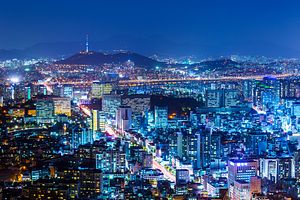Weakening economic and trade data from Japan and South Korea suggest a trend that may be difficult to break, as both countries are seeking to jumpstart their economies through government intervention. While Japan’s economy has stagnated for quite some time, Korea has maintained moderate growth and has only recently begun to show signs of needing support. Although both countries are likely to follow similar paths in order to stimulate their economies, South Korea stands the better chance of staving off the economic doldrums and returning to what might be considered a reasonable growth rate for a developed economy, at least over the short-term.
Japan’s trade deficit ballooned again in June, beyond what was forecast by a Bloomberg News survey of 29 economists. Exports shrank 2 percent year on year according to the Japanese finance ministry, while the forecast was for just a 1 percent contraction. Imports meanwhile increased 8.4 percent, resulting in a trade deficit of 822.2 billion yen ($8.1 billion), compared to the 643 billion yen deficit projected. Not only did exports decrease as a percentage of trade, they also fell by volume 1.7 percent. The chief economist at Tokyo’s Citigroup Inc., Kiichi Murashima, expects “export recovery will be sluggish mainly due to structural reasons… [and that] the trade deficit will remain at the current level through the end of this year with both exports and imports growing slightly.” Even though the yen has weakened 16 percent against the dollar since December 2012, when Shinzo Abe became prime minister, exports have failed to increase as a percentage of trade due to Japan’s rising demand of fossil fuels in the wake of its nation-wide nuclear shutdown. To underscore this fact, imports from January to June were higher than any other six month period since comparable data first started being compiled in 1979.
On Tuesday Japan also cut its growth forecast for the fiscal year from 1.4 percent to 1.2 percent. According to officials at the Cabinet Office, the “forecast was based on weak demand overseas and stronger than expected imports, [as well as] weak domestic demand following the consumption tax increase in April.” The government still expects growth to increase to 1.4 percent in the next fiscal year once Abe’s structural economic reforms begin to take effect. These numbers will likely put pressure on the Bank of Japan to increase its asset-purchasing program later this year. Yet some economists found some positives in the trade data, citing the fact that June’s trade deficit was smaller than May’s. The trend toward narrowing the deficit will probably contribute to growth by the second quarter, according to Marcel Thieliant at Capital Economics.
South Korea’s economy grew by 0.6 percent in the second quarter, its slowest growth in seven quarters, but it is largely being attributed to a sharp decline in consumer spending in the aftermath of the Sewol ferry tragedy in April. South Korea’s central bank also cut the growth forecast for the year from 4 percent to 3.8 percent, which it said was also due to the impart of the ferry disaster. While 3.8 percent is still a healthy rate of GDP growth for a developed economy like South Korea, the government is not prepared to sit back and wait and see if growth will recover on its own.
To address its weakening domestic consumer demand and drop in exports, the South Korean finance ministry has announced plans to “implement a macroeconomic policy package worth about 40.7 trillion won” ($39.7 billion), and that it will continue this expansionary policy until the intended results are reached. The policy package will also be included when next year’s budget is drawn up. The plan will create tax incentives to encourage businesses to increase the ratio of profit spent on employment and investment, and to increase employee pay overall. It will also include measures to support companies to turn part-time employees into full-time employees, and to address problems in the housing debt market.
Given the relatively healthy state of South Korea’s economy, this new macroeconomic policy package could indeed have positive effects over the short and medium terms. While certainly not on the same scale as the “three arrows” of Abenomics, it seeks to do much the same thing by stimulating several sectors of the economy at once through large amounts of government spending. South Korea will have to be careful not to fall into the same problem that Japan currently faces, finding diminishing returns on ever increasing economic interventions. South Korea faces some of the same structural problems that Japan does, such as an aging population that will eventually decline (and thus negatively impact the economy), but its economy is more robust at present and doesn’t suffer the same debt burden. Stimulus policies like the current one will have to be used sparingly and possibly only at times of greater crisis, if it is to avoid the economic situation that Japan now faces.
































